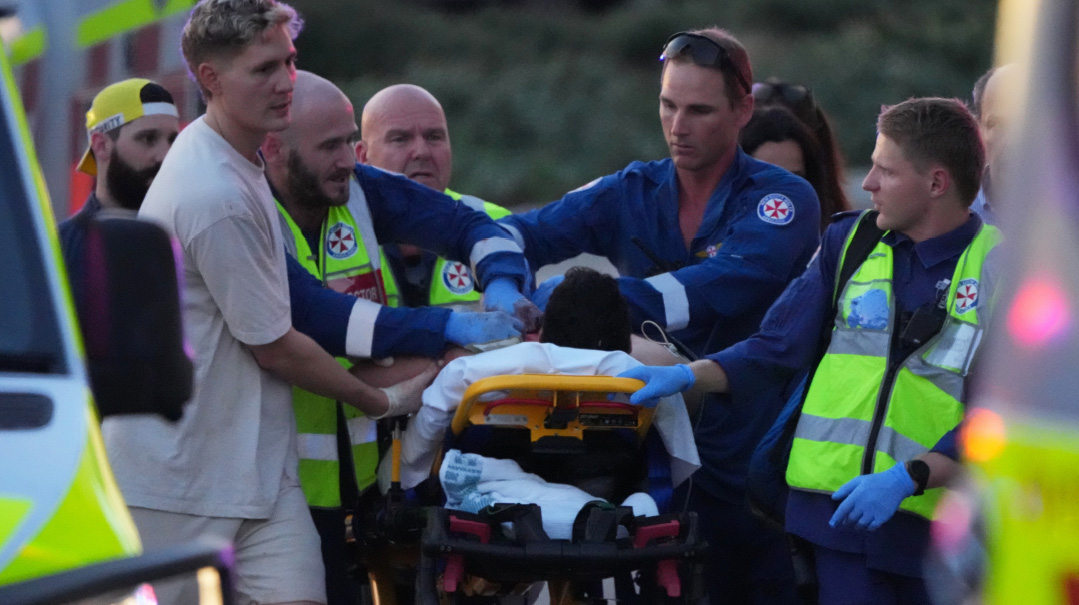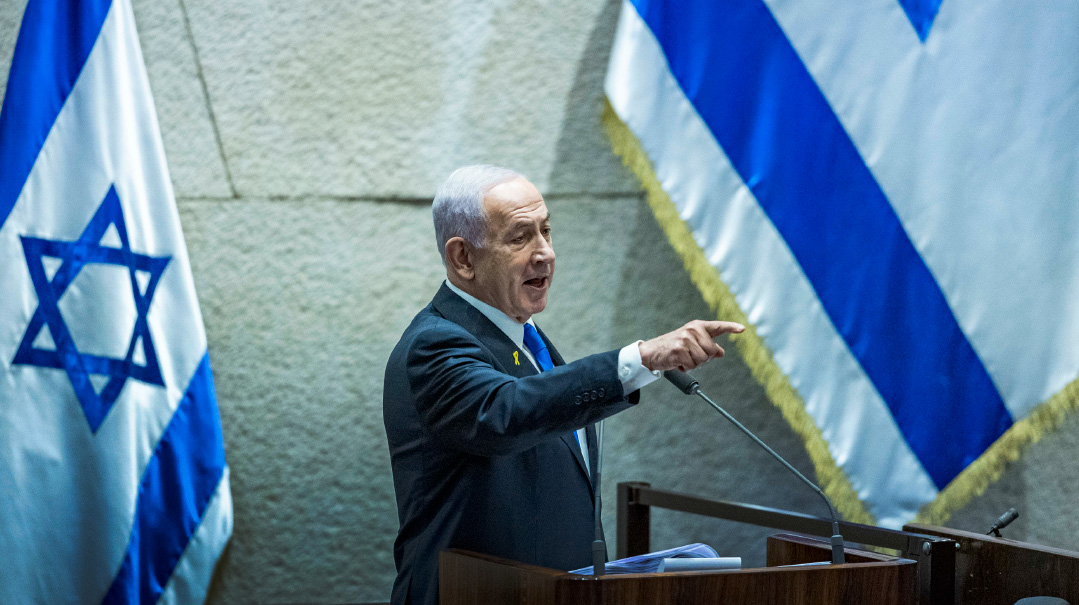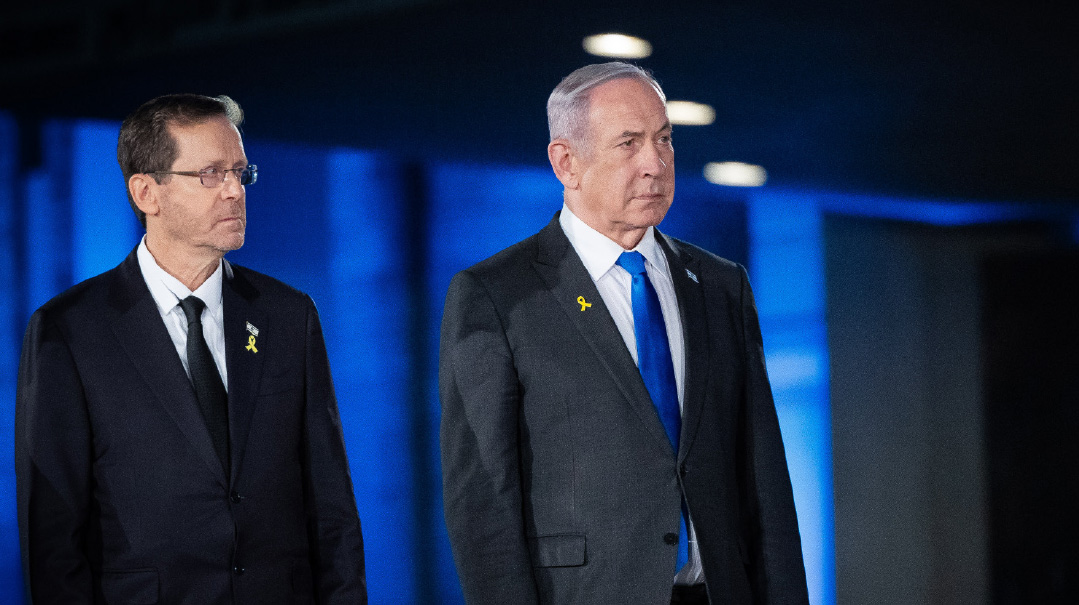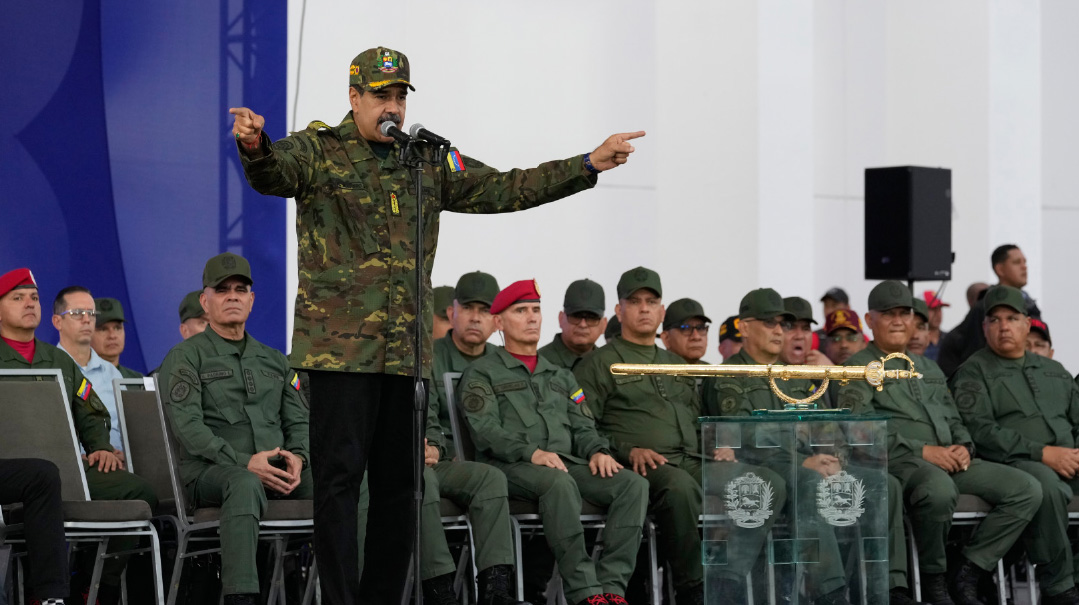A Life of Strength and Faith


Photos: Flash90
P
urim was in the air at the kindergartens in Eli, a relatively young community of 950 families located in the Shomron-Binyamin region. But elsewhere, the adults were all too aware that they had just lost one of the town’s finest Torah scholars, Rabbi Achiad Ettinger Hy”d.
During the painful shivah week, neighbors and friends — as well as politicians and other public figures — streamed to the Ettinger home to offer words of consolation to the new widow, Tamar, and her 12 orphaned children, aged one year to 21. The mourners received much love and many hugs and gifts, but nothing will bring back their father — a person widely admired by his community and large circle of acquaintances.
“The Ettinger family came to us directly from south Tel Aviv,” says Michal Weisel, the town’s spokesperson and absorption coordinator. “Rabbi Ettinger was doing amazing work there in the run-down neighborhoods. He established a yeshivah that quickly became a beacon of Torah and avodas Hashem. But when his children grew older, it became vital to find them suitable schools. He chose our town, and they arrived here three years ago. Rabbi Ettinger would travel to Tel Aviv each day — no matter the weather — to his yeshivah, Yeshivat Oz V’Emunah.
“My husband was his chavrusa,” she adds. “He marveled all the time about Rabbi Ettinger’s refinement, his diligence, and his hasmadah. He was a real talmid chacham, a lamdan, with true diligence.”
Spiritual Father and Leader
Although the family lives in the center of Eli, Rabbi Ettinger’s main spiritual work in Eli took place in the Neve Shir neighborhood.
“It happened two years ago,” relates Shira Gizbar, a resident of Neve Shir. “Rabbi Ettinger hitched a ride with one of our neighbors, and that’s how he found out we were looking for a rav. He began to come here for Shabbos tefillos, instead of davening in the town’s main shul. This meant a long walk, with a steep hill. But Rabbi Ettinger didn’t desist.
“On Shabbos he remained to deliver a weekly halachah shiur. Before Pesach, he baked matzos with us, and even gave a special workshop for children. He was the one who kindled our bonfire on Lag B’omer. He was our spiritual father, our rav, and our leader. Needless to say, he did this all on a volunteer basis, without any remuneration.”
On Sunday, March 17, Rabbi Ettinger set out in his car for his yeshivah. After driving for about ten minutes, he passed the shopping center at the Ariel Junction, where he heard an unusual tumult and realized some sort of attack was taking place. Instead of driving on, he turned around. The scene that met his eyes was horrific: Omar Abu Laila, 19, from the village of Zawiya, had grabbed the weapon from an Israeli soldier standing at the junction. He then shot and killed Sergeant Gal Keidan, 19.
“I was there a minute after it happened,” recalls Shira Gizbar. “I had just walked out of one of the stores in the shopping center when I heard the gunshots. I realized it was an attack, so I dashed into my car and fled the scene. Rabbi Ettinger, in contrast, was much braver. He could have saved himself, but decided to go back and shoot the terrorist. Tragically, he was only able to lightly wound the terrorist in his shoulder.”
The terrorist fired several rounds at Rabbi Ettinger and struck him in the head. The terrorist continued his deadly rampage at the Gitai Avishar Junction, where he fired at another soldier, Alexander Dvorsky. Rabbi Ettinger and Dvorsky were taken to Beilinson Hospital in Petach Tikvah, where Rabbi Ettinger’s condition was listed as critical.
The passing hours didn’t bring good news. The family went before the microphones and pleaded with the public to daven for the recovery of Rabbi Achiad Ehud ben Carmit.
Care and Concern
A day after the attack, Beilinson Hospital announced that Rabbi Ettinger had passed away. Thousands of people from Eli and nearby towns, as well as past and present students of Rabbi Ettinger, attended the heartrending levayah, which included tearful hespedim from Rabbi Avraham Schiller, the rav of Eli, Rav Shlomo Moshe Amar, the Sephardic Chief Rabbi of Jerusalem, and others.
After the burial, shifts were set up around the clock to care for the children and to provide meals, including the Purim and Shabbos seudos. But alongside the dedicated concern, the attack had everyone on edge.
“The Ariel Junction is just a ten-minute drive from here,” Michal Weisel points out. “In recent months, there has been a marked spike in security incidents, such as rock throwing at vehicles. Our town is relatively big, and most residents travel to the center of the country or Jerusalem every day. We can each relate experiences of attempted attacks on a nearly daily basis.
“B’chasdei Shamayim these attempts aren’t realized. There is a comprehensive military presence here and full cooperation between the Jewish towns, the army, and the security establishment. We’re not complaining. But when such a precious person is murdered al kiddush Hashem, the blow to the town is strong and painful.”
A Light in South Tel Aviv
Tears also flowed freely at Yeshivat Oz V’Emunah in the Neve Sha’anan neighborhood of Tel Aviv.
“There is no one like him,” eulogized Rabbi Yaron Adourian, one of the yeshivah’s staff members. “He came to Neve Sha’anan, a neighborhood that has declined in recent years, to restore the Jewish character of the neighborhood. Someone else would have given up long ago and gone home. But he had remarkable tenacity. The best way to eternalize his memory will be to ensure that his yeshivah will continue to thrive and draw people to learn Torah.”
Liron, a local resident, added, “He had a serious burden on his shoulders, because he started with nothing and had to be busy with all kinds of things for the yeshivah, such as the secretarial work and fund-raising. He was even the one who took care of the food. But he always had time for another person.”
For Naomi Ha’eitan, owner of the Etrog studios in Kedumim, the murder of Rabbi Ettinger touched a very personal chord. Their families were neighbors in Kedumim, until the Ettingers moved to south Tel Aviv to establish the Oz V’Emunah yeshivah.
Later, the Ha’eitans helped Rabbi Ettinger fundraise for his yeshivah by producing a video, at no cost.
“My husband and Rabbi Ettinger walked through the streets of the neighborhood, filming the physical and spiritual neglect,” she comments. “Rabbi Ettinger spoke about the many shuls that existed in south Tel Aviv in the last century. They were centers of tefillah and Torah learning and served as courts for chassidic dynasties, until they were abandoned.
“He also described how his yeshivah was having a positive influence on the entire area. It’s considered the ‘mezuzah’ of south Tel Aviv and the most active Torah center in the area. And he stressed that a bit of light can banish a lot of darkness, a sentence that became his motto and that of the yeshivah.”
After Ha’eitan heard the tragic news, she instinctively retrieved the raw footage that was used to create the video.
“Through the tears, I noticed that everything Rabbi Ettinger said was positive. He didn’t speak negatively about the area, or about the non-Jewish migrants who had overrun it. He didn’t complain about the municipality, which placed many obstacles in his path, or about the secular residents who are so distant. He spoke only about the importance of disseminating Yiddishkeit and learning Torah. That is who he was: a positive person who only saw the good in others and whose aspiration was to increase and strengthen this good.”
(Originally featured in Mishpacha, Issue 754)
Oops! We could not locate your form.












